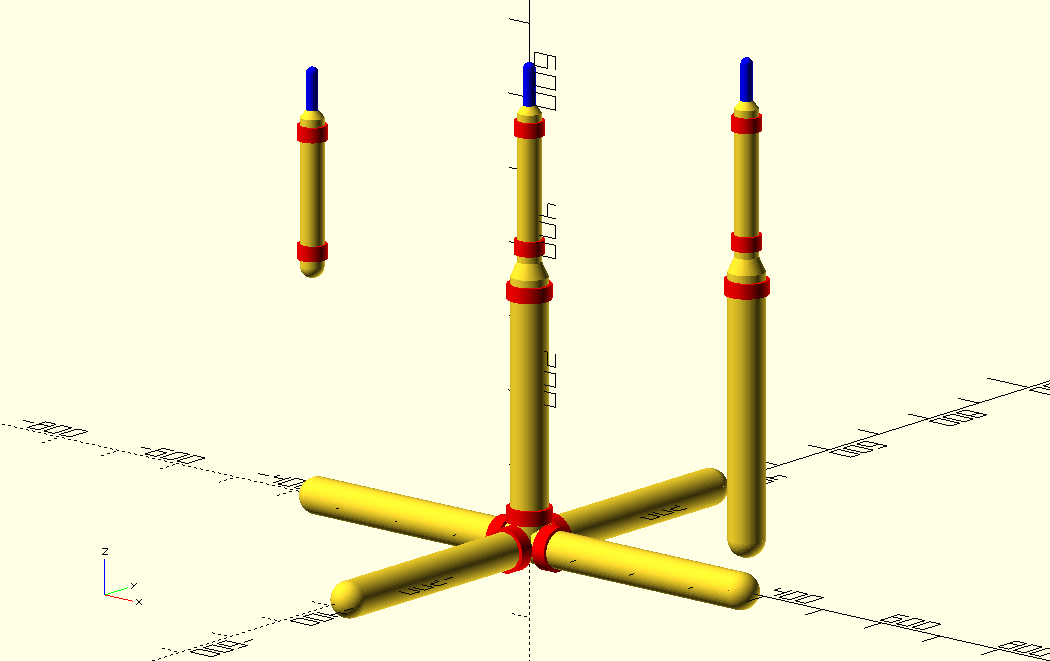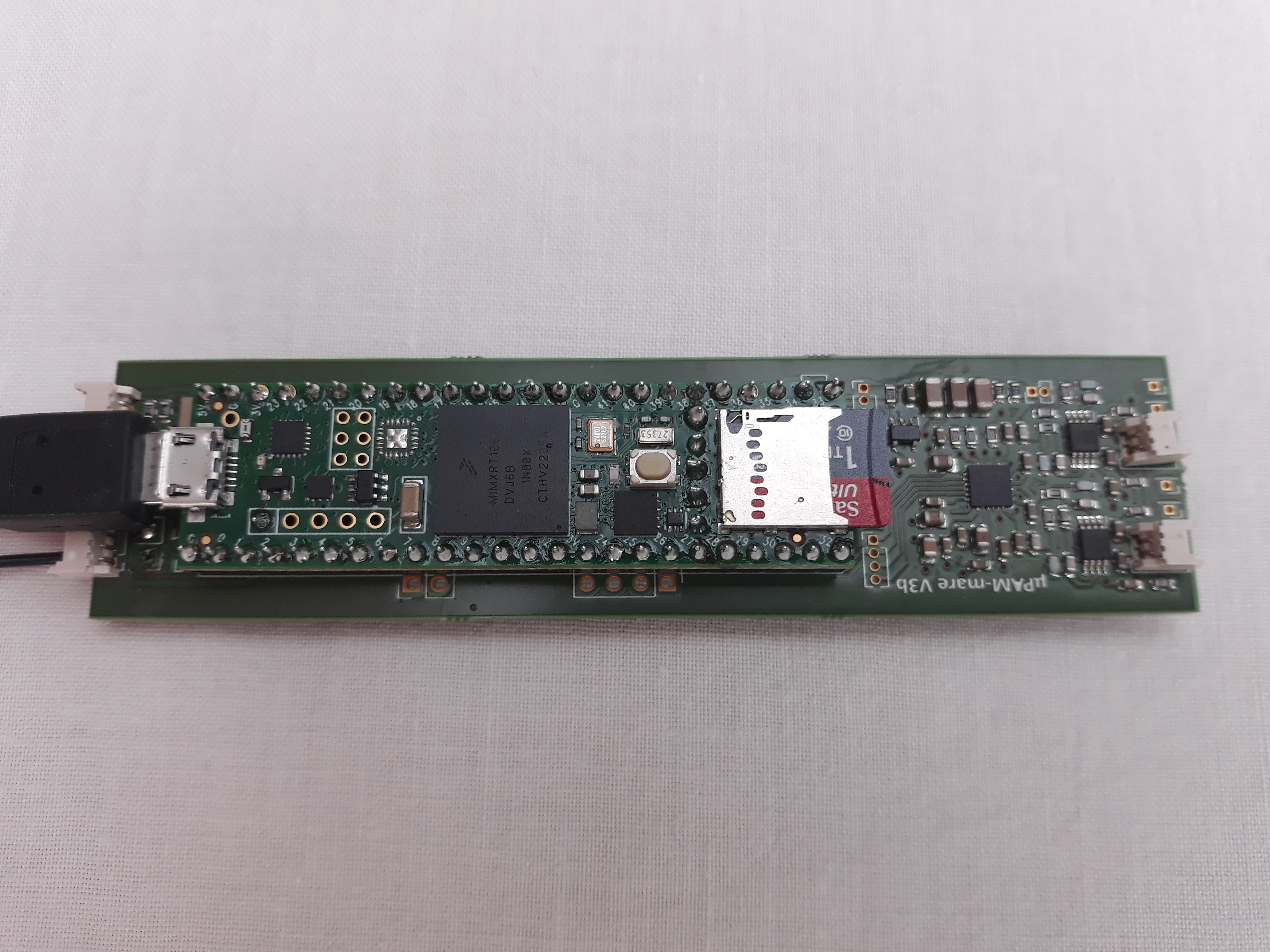microPAM-mare#
Objectives#
Development of an affordable acouustic recorder for underwater passive acoustic monitoring. It is anticipated that the implementation of the microPAM-mare varies for different use cases.
Constraints#
In order to satisfy the implicit objective to enable the construction of such an acoustic listening and monitoring device some constraints are accepted.
maximal operating depth 100 m
expected endurance 40 days continuous recording (maximal power configutation)
Hardware#
The recorder consists of three main components:
hydrophone
recording electronics
power supply
The at-sea use of such a recorder requires special attention to the following apects:
isolation of electronics from water
buoancy control
Here is a simple 3D sketch on how microPAM-mare recorders for shallow water applications could look like.

Three options are envisioned
electronics + hydrophone (+ cable to boat) (left device in figure, shown without cable)
self-recording: electronics + hydrophone + 1 battery pack (+ floating device) (right device in figure)
bottom mounted: electronics + hydrophone + 5 battery packs (middle device in figure)
The battery pack would contain 6 D-Cells (~360 mm long) but can be changed.
In the picture: blue is hydrophone and red are indications for screwed joints (not to scale and form)
All housings are made of 16bar PVC tubes, glued or screwed together and are rated to at least 150 m. Apart from drilling some hole for the hydrophone connection and cutting tubes, no machining is required, so everyone should be able to assemble the system. That at least is the idea. The tubes for batteries are 50 mm in diameter, the tupe for electronics are 32 mm in diameter, and the hydrophone is 16 mm in diameter.
While with machining one can obtain better looking systems, but here I wanted to use only parts that one can find in hardware stores or from online shops.
Hydrophones#
Hydrophones are the underwater equivalent of microphones and are designed to convert unterwater sound pressure into electric voltage.
…
work in progress
Recording electronics#
The recording electronics of undwerwater recorders are similar to the in-air (terrestral) sound recorder and therefore similar components may be selected.
The following 3D rendering shows a first Teensy 4.1 (T4.1) based recording board.

The PCB contains not only the connections to the T4.1, but on the right side a dedicated stereo ADC with low-noise pre-amplifiers. These pre-amplifiers are integrated to the ADC board to reduce the production cost. This integration is possible when the hydrophones are located close to the recorder electronics.
…
work in progress
Power supply#
…
work in progress
Software#
Similar to the in-air (terrestrial) version of the microPAM, the software is straight forward and based on Arduino compatible software environment.
…
